Ripley Entertainment Inc.'s Blog, page 405
June 19, 2017
A Girl Was Frozen in Sub-Zero Temperatures And Survived
Featured in Ripley's Believe It or Not!

On a chilly night in Minnesota, a girl found herself seeking shelter in 22-below-zero temperatures. Within her view, Jean Hilliard saw a farmhouse. Grabbing her mittens and coat, Jean thought it was best to leave her hat behind since she would be in a warm place soon. Unfortunately, the farmhouse was empty, and the one next to it was also. She saw a house not too far and thought, another two miles wouldn’t be so bad.
Jean’s body was found only 15 feet away from the door of the third house Jean attempted to contact. Her body laid frozen in the snow. Wally Nelson, the owner of the house, found, what he thought to be her corpse. Nelson described her face to be “ghost-white” and her body as “stiff as a popsicle.” Unsure of what do with her, Nelson suddenly heard a slight moan coming from the girl’s body.
Without hesitation, Nelson carried Jean’s frozen body into the backseat of his car. It was the only place she’d fit since none of her joints could bend. Nelson said it was apparent that she had crawled her way to the house before she collapsed. It looked like she had fallen about four times from a mailbox that was about one-eighth of a mile down the road.
Hospital Visit
It looked like Jean’s frozen body had a slim chance of surviving. Her body temperature couldn’t even register on the thermometer. Doctors said her pupils were dilated; her eyeballs completely frozen. Not only that, but her feet were crystallized into the shape of her winter boots. The medics couldn’t find a pulse, yet alone blood pressure, because it was impossible to find a vein on her body. George Sather, the doctor, said he wasn’t sure if she would be able to survive but couldn’t give up on her since he also heard a faint moan.

This is what severe frostbite looks like. A rescue blanket is wrapped around her and those are frostbite wounds on the women’s face.
Unsure of how much longer she had left, he proceeded to wrap Jean’s frozen body with an electric heating pad that was circulating with 102-degree water. Also giving her oxygen, the heating pad was removed when her temperature finally reached around 98 degrees.
Surviving
Miraculously surviving the intense frostbite, it did seem that Jean would be forced to have both legs amputated after defrosting. Believe it or not, Jean made a full recovery. There was no sign of any damage. Doctors say that the only thing they owe this speedy recovery to was her youth and incredible circulation.
It looks like someone got lucky.
How can you protect yourself?
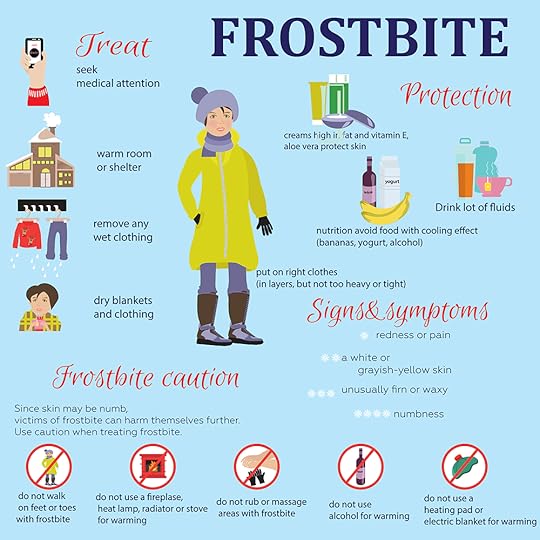
Have you ever had a frostbite? Let us know in the comments below!
Source: A Girl Was Frozen in Sub-Zero Temperatures And Survived
CARTOON 06-19-2017
June 18, 2017
CARTOON 06-18-2017
June 17, 2017
CARTOON 06-17-2017
June 16, 2017
ASMR: Why Whispering Gives Some People the “Tingles”
Featured in Ripley's Believe It or Not!

Cool Stuff, Strange Things
Hosted by Ripley’s lead researcher, Sabrina Sieck, let Ripley’s Believe It or Not! introduce YOU to the coolest stuff and strangest things.
Today: ASMR
ASMR
It might seem like just another weird corner of the Internet, but ASMR, short for autonomous sensory meridian response, has become hugely popular on sites like YouTube. On these platforms, ASMRtists aim to trigger ASM responses in listeners by doing things like speaking softly, making quiet, repetitive sounds (like turning the pages of a book) and performing mundane tasks.
But what is an ASMR?
Definition
An ASMR experience is defined by a static-like tingling of the skin that begins on the scalp and moves down to the upper spine in reaction to some sort of sensory stimulus.
A frequently-cited example of ASMR in pop culture is the cult following of Bob Ross’s television show, “The Joy of Painting”. For years, viewers with no interest in painting derived more pleasure than they could explain from watching Ross talk softly while dabbing happy little trees of paint onto a canvas. This, ladies and gentlemen, checks all of the ASMR boxes, from precision to soothing sounds and reassuring speech patterns. With over 400 episodes, “The Joy of Painting” has become an ASMR staple, inciting that tingling, chilling, euphoric, sensation in this niche community.

Origins
ASMR was coined by cyber security professional Jennifer Allen in 2010 when she solidified the ASMR cult by making a Facebook group. Now, this, and the whole ASMR hoopla may seem like a modern fad (something that wouldn’t see the light of day without the internet), but earlier descriptions of ASMR exist. For example, in Virginia Woolf’s Mrs. Dalloway:
“‘K . . . R . . .’ said the nursemaid, and Septimus heard her say “Kay Arr” close to his ear, deeply, softly, like a mellow organ, but with a roughness in her voice like a grasshopper’s, which rasped his spine deliciously and sent running up into his brain waves of sound which, concussing, broke. A marvelous discovery indeed—that the human voice in certain atmospheric conditions (for one must be scientific, above all scientific) can quicken trees into life!”
The “Tingles”
Consciously planning not to fall into the same trap as other internet-based sub-cultures like Furries, Otherkin, and Bronies; the ASMR community at large maintains that it is not inherently sexual. But, log on to the interwebz and it can get a little PG-13.
Role-play scenarios as doctors, show-and-tell guides, pretty girls whispering about nothing in particular are all common in ASMR videos. Some ASMRtists even go as far as cosplaying and acting out intimate first-person experiences like giving a massage or haircut to the viewer.
However, for the most part, ASMRotica has become an overt minority in the community.

Scientific Basis
For the most part, the scientific community doesn’t deny the existence of ASMR but cites that evidence of it is all anecdotal. So, it might be a real thing, but it’s also really difficult to research. As an observer, you can’t see or feel what someone else is experiencing. It’s inherently personal, and it doesn’t happen to everyone. So it falls into a blind spot, kind of like synesthesia once did.
Synesthesia is a blending of the senses that allows people to experience sounds and even smells as colors. At least four in every one hundred people have some form of this mixing of the senses, and that stat was only recently discovered. It wasn’t until the 1990s that people came up with a reliable way to measure synesthesia. Today, many celebrities, especially musicians, claim to experience it—from Duke Ellington to Pharrell, who said it is his “only reference for understanding,” and if his synesthesia suddenly went away, he is not sure that he could make music.
So, for now, without any scientific evidence, we are just going to categorize the curious phenomena of ASMR as cool stuff and a weird thing.
Share & Subscribe
If you liked the show, please share it with your peeps. Remember to SUBSCRIBE to our channel to stay BION-informed!

Source: ASMR: Why Whispering Gives Some People the “Tingles”
ASMR: Why Whispering Gives Some People the "Tingles"
Featured in Ripley's Believe It or Not!

Cool Stuff, Strange Things
Hosted by Ripley’s lead researcher, Sabrina Sieck, let Ripley’s Believe It or Not! introduce YOU to the coolest stuff and strangest things.
Today: ASMR
ASMR
It might seem like just another weird corner of the Internet, but ASMR, short for autonomous sensory meridian response, has become hugely popular on sites like YouTube. On these platforms, ASMRtists aim to trigger ASM responses in listeners by doing things like speaking softly, making quiet, repetitive sounds (like turning the pages of a book) and performing mundane tasks.
But what is an ASMR?
Definition
An ASMR experience is defined by a static-like tingling of the skin that begins on the scalp and moves down to the upper spine in reaction to some sort of sensory stimulus.
A frequently-cited example of ASMR in pop culture is the cult following of Bob Ross’s television show, “The Joy of Painting”. For years, viewers with no interest in painting derived more pleasure than they could explain from watching Ross talk softly while dabbing happy little trees of paint onto a canvas. This, ladies and gentlemen, checks all of the ASMR boxes, from precision to soothing sounds and reassuring speech patterns. With over 400 episodes, “The Joy of Painting” has become an ASMR staple, inciting that tingling, chilling, euphoric, sensation in this niche community.

Origins
ASMR was coined by cyber security professional Jennifer Allen in 2010 when she solidified the ASMR cult by making a Facebook group. Now, this, and the whole ASMR hoopla may seem like a modern fad (something that wouldn’t see the light of day without the internet), but earlier descriptions of ASMR exist. For example, in Virginia Woolf’s Mrs. Dalloway:
“‘K . . . R . . .’ said the nursemaid, and Septimus heard her say “Kay Arr” close to his ear, deeply, softly, like a mellow organ, but with a roughness in her voice like a grasshopper’s, which rasped his spine deliciously and sent running up into his brain waves of sound which, concussing, broke. A marvelous discovery indeed—that the human voice in certain atmospheric conditions (for one must be scientific, above all scientific) can quicken trees into life!”
The “Tingles”
Consciously planning not to fall into the same trap as other internet-based sub-cultures like Furries, Otherkin, and Bronies; the ASMR community at large maintains that it is not inherently sexual. But, log on to the interwebz and it can get a little PG-13.
Role-play scenarios as doctors, show-and-tell guides, pretty girls whispering about nothing in particular are all common in ASMR videos. Some ASMRtists even go as far as cosplaying and acting out intimate first-person experiences like giving a massage or haircut to the viewer.
However, for the most part, ASMRotica has become an overt minority in the community.

Scientific Basis
For the most part, the scientific community doesn’t deny the existence of ASMR but cites that evidence of it is all anecdotal. So, it might be a real thing, but it’s also really difficult to research. As an observer, you can’t see or feel what someone else is experiencing. It’s inherently personal, and it doesn’t happen to everyone. So it falls into a blind spot, kind of like synesthesia once did.
Synesthesia is a blending of the senses that allows people to experience sounds and even smells as colors. At least four in every one hundred people have some form of this mixing of the senses, and that stat was only recently discovered. It wasn’t until the 1990s that people came up with a reliable way to measure synesthesia. Today, many celebrities, especially musicians, claim to experience it—from Duke Ellington to Pharrell, who said it is his “only reference for understanding,” and if his synesthesia suddenly went away, he is not sure that he could make music.
So, for now, without any scientific evidence, we are just going to categorize the curious phenomena of ASMR as cool stuff and a weird thing.
Share & Subscribe
If you liked the show, please share it with your peeps. Remember to SUBSCRIBE to our channel to stay BION-informed!

Source: ASMR: Why Whispering Gives Some People the "Tingles"
CARTOON 06-16-2017
June 15, 2017
Have You Ever Played with a Ouija Board?
Featured in Ripley's Believe It or Not!
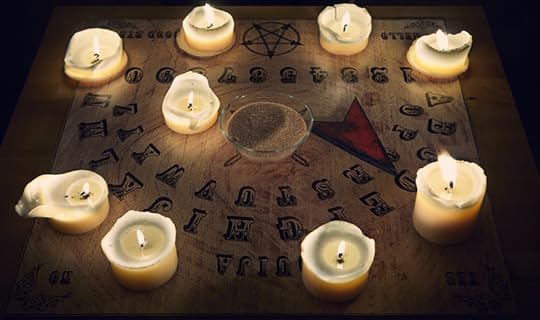
To many, the Ouija board isn’t just a game teens bust out during their slumber parties, but merely a work of art, and yes, a way of communicating with the dead. Take, for example, Brandon Hodge. He is currently collecting planchettes and other forms of spirit boards.

Talking boards or what you might know as the Ouija board evolved in the latter half of the 19th-century. Oddly enough during this time, religious notions were being challenged and debunked with modern advancements as well as scientific discoveries. It’s been said that Charles Kennard, a Maryland native, is the inventor of the Ouija board.
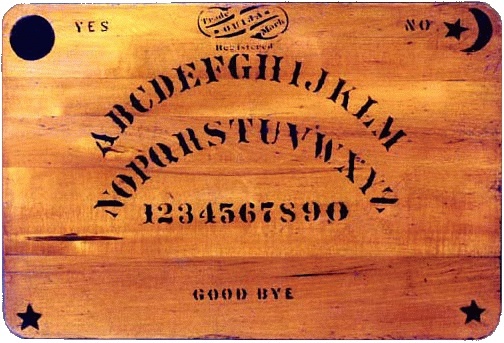
Original Ouija Board created in 1891 via Wikimedia Commons
Naming the board
Apparently, the board became such a huge hit that Kennard sought out a lawyer called Elijah Bond. Bond claimed his sister-in-law, Helen Peters, was an incredible medium and would be able to ask the board what it would like to be named. The board spelled out O-U-I-J-A. Without hesitation, Peters asked what it meant, and it spelled out G-O-O-D L-U-C-K. The building where the seance took place is still there. It’s now a 7-Eleven. Interested in a road trip? You can take a look for yourself at .
Prove it for the patent
The next step was to obtain the patent on the lucky board. Bond encouraged Peters to visit the patent office in D.C. The chief clerk was baffled by what they claimed the board could do. He said the only way he would give them the patent is if the Ouija could spell out his name. According to the legend, the board spelled out his name. Flabbergasted, he handed over the patent.
They were able to turn this into a game that retailed for only $1.50.
Why so popular?
Again, there are many speculations on who invented the Ouija board, but we know that the name originated from Mr. Kennard; however, spirits boards were quite popular before his time, especially in the Victorian era. Why? Well, it was a time where almost anything and everything was taboo. The allure of breaking rules, in particular with the opposite sex, was easy to obtain with the mystical board. Cliche, we know, but hey, before the infamous saying “Netflix and Chill” there was the ultimate date night with the Ouija board. Yes, kneeling down and touching the tips of your fingers and scaring your date was charming. Hey, sign me up! That sounds like a phenomenal night.
Another reason why this 100+-year-old game took off was due to wars. The Civil War brought in high death toll rate. More people found solace trying to communicate with their loved ones through a board than sending off a letter where there would be no responses. Even during the Vietnam War, believe it or not, the Ouija board outsold Monopoly! No game has ever done this before or after the Ouija.
Hasbro
Before the Ouija board ended up in the hands of our beloved Hasbro, it was first inherited by William Fuld when Charles left his Kennard Novelty Company. The name changed to Ouija Novelty Company, and Fuld began producing the boards in 1901.
Fuld created an array of Ouija designs which lead to 21 registrations in three countries. He is the only one in history to hold that many Ouija patents and copyrights. In 1966, his estate was sold to Parker Brothers who were then sold to Hasbro.
Ideomotor effect
The Ideomotor effect is known as your unconscious and involuntary motor movements. Your actions are performed due to expectations, suggestions or even preconceptions.
The most famous of examples when debunking the Ouija board is dowsing. If you were to try this out yourself, you’d hold out two rods in front of you. Eventually, you will see them cross, usually its trying to detect water. Someone implementing this experiment and advised that there is water beneath them will, at some point, move the rods themselves.
Ripley’s Board
Here at Ripley’s we have an extraordinary collection from the witch Gerald Gardner but most importantly we have his Ouija Board. Born in 1884 on the Isle of Mann, Dr. Gerald Gardner was the father of modern witchcraft. Combining magic with sorcery, he simplified the complex ceremonial rites of 19th-century witchcraft and made the coven the center of the ritual. He also insisted all attending witches be “sky-clad”, so all rites were performed in the nude!
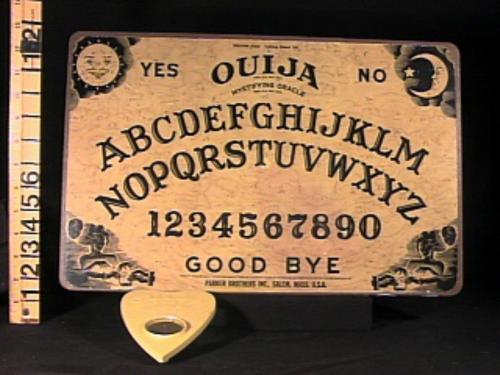
Gardner’s Ouija Board
The ouija board displayed here, and Gardner’s entire collection of witchcraft, magic and superstition artifacts were purchased by Ripley’s from Dr. Gardner’s estate in 1973.
Tales
Ouija is apparently an ancient Egyptian word meaning good luck others say the word comes from the French and German words for “yes,” (oui and ja).
Ouija board outsold Monopoly!
In 1993, a jury consulted with a Ouija board the night before they convicted Stephen Young for the double murder of newlyweds.
Some professors at the University of Bologna held a séance. They asked the Ouija where they could find the kidnapped politician Aldo Moro. Apparently, the board spelled out Gradoli. They found him a street called “Via Gradoli.”
Do you believe in the Ouija board? Let us know in the comments below!
First Ever Two-Headed Porpoise Discovered
Featured in Ripley's Believe It or Not!

A two-headed porpoise was caught in a net by Dutch fisherman in the North Sea, this harbor porpoise is the first of its kind ever discovered.
Here at Ripley’s Believe It or Not!, we are no strangers to polycephaly—a congenital condition in which an animal is born with multiple heads. If there are just two, the condition can be referred to as dicephaly.
Though turtles and snakes are the most common dicephalic animals, two-headed cows, sheep dogs, cats, fish, and pigs are also regularly documented.
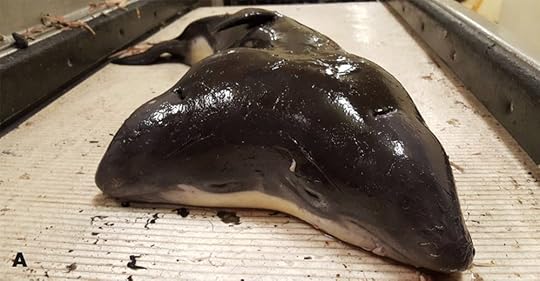
CC Erwin Kompanje (Henk Tanis)
Incredibly Rare
While the harbor porpoise is fairly common is this part of the world, no two-headed creature has ever been seen. In fact, this species has only ever been seen producing twins at all one time before.
In the cetacean family—which includes whales, dolphin, and porpoises—only 10 cases of polycephaly have been recorded, according to Online Journal of the Natural History Museum Rotterdam.

CC Erwin Kompanje (Henk Tanis)
The Find
The fishermen were 15 nautical miles off the coast when they noticed something strange in their beam trawl net. They pulled the strange form aboard, but it was already dead.
The porpoises were 27-inches long and weighed about 13 pounds. The twins were male, but are unlikely to have survived long—if at all. Polycephalic animals often live for just a few days, as their organs struggle to meet the demands of their bodies. A cetacean especially would have great difficulty swimming with two brains telling it what to do.

CC Erwin Kompanje (Henk Tanis)
Lost At Sea
While we would have liked to add the twins to our collection of animal oddities, the fishermen decided to cast it back into the sea. They feared possessing the dolphin could be illegal. Thus the specimen is lost to us and scientists alike. (If you want to see another polycephalic animal in person, stop by one of our many odditoriums.)
CARTOON 06-15-2017
Ripley Entertainment Inc.'s Blog
- Ripley Entertainment Inc.'s profile
- 52 followers








